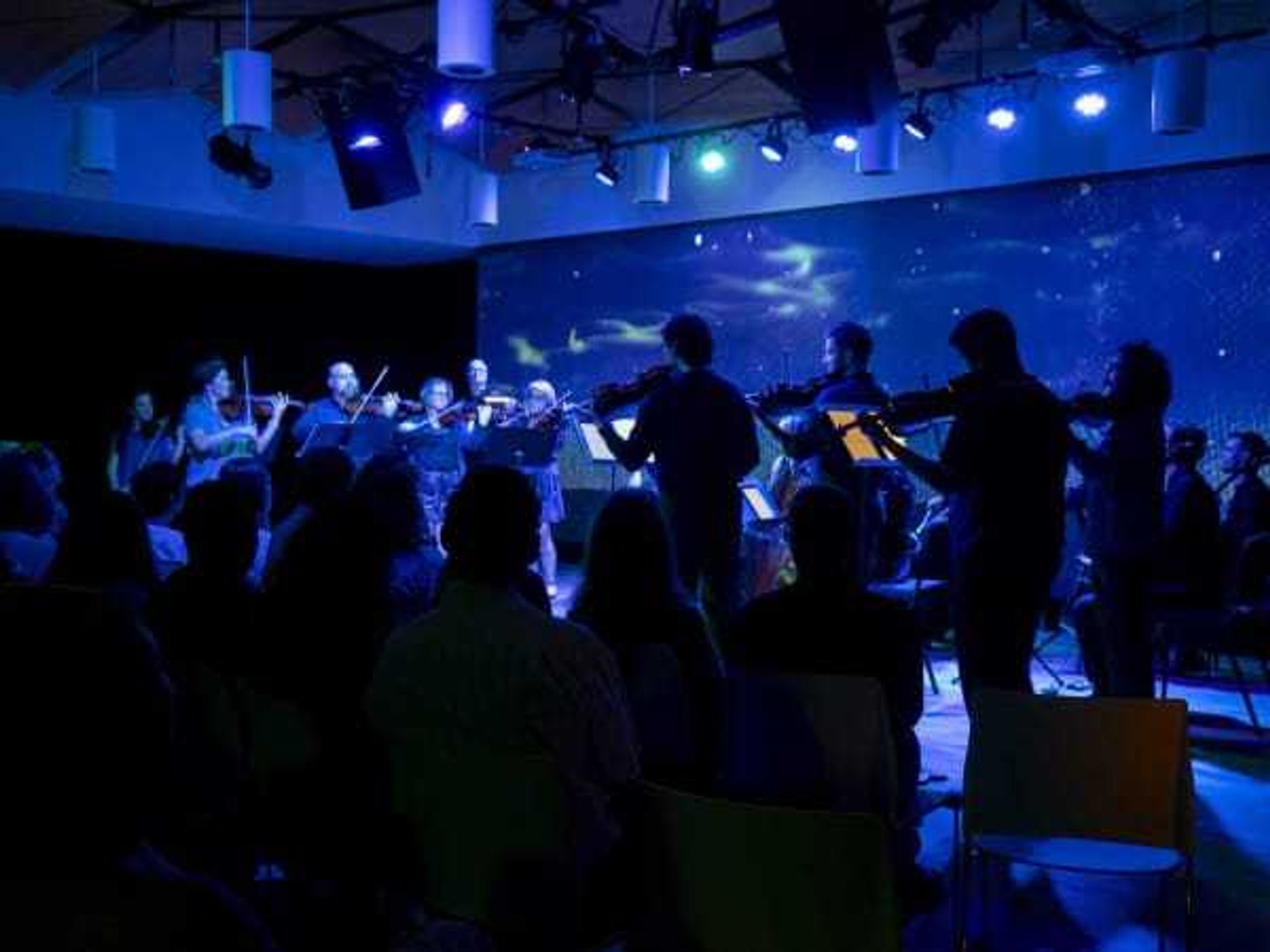a bibliophile's dream
Austin's Harry Ransom Center gives a look inside more than 150 old books with fascinating histories
An extraordinary new exhibition of beautifully aged books is going on display at The Harry Ransom Center at The University of Texas at Austin on Saturday, August 19.
The Long Lives of Very Old Books meticulously shares the stories of each book's life throughout the passage of time. It highlights the ways ordinary people can use research to uncover these histories, allowing admiration for the old volumes through multiple perspectives. The exhibit will display more than 158 artifacts, most drawn from the Ransom Center's own collection, until December 30. They are separated into collections based on their state or edition: Survival, Recycling, Variation, Marking, and Repair.
There are many recognizable and prominent titles to be admired within the clear glass cases — like three copies of William Shakespeare's First Folio (in celebration of the tome's 400th anniversary) — to more esoteric finds, such as a 16th-century English book that was used as a Harvard student's personal diary in the 1960s and 1970s.
Most of the books in the exhibit were published before or around 1700, according to Aaron T. Pratt, the Ransom Center's Carl and Lily Pforzheimer Curator of Early Books and Manuscripts, who curated the exhibition.
"The show is really interested in what you can learn from approaching books as unique artifacts that have made their way from the printing houses of early modern Europe in the 15th, 16th, and 17th centuries, to special collection libraries like the Ransom Center today," Pratt explains. "It's very rare to have a book that came out of the early modern period, and nothing happened to it for 300 to 400 years."
Diary of David C. K. McClelland, 1968–1971, in Hugh Broughton, Concent of scripture (London, ca. 1590).
Photo courtesy of The Harry Ransom Center
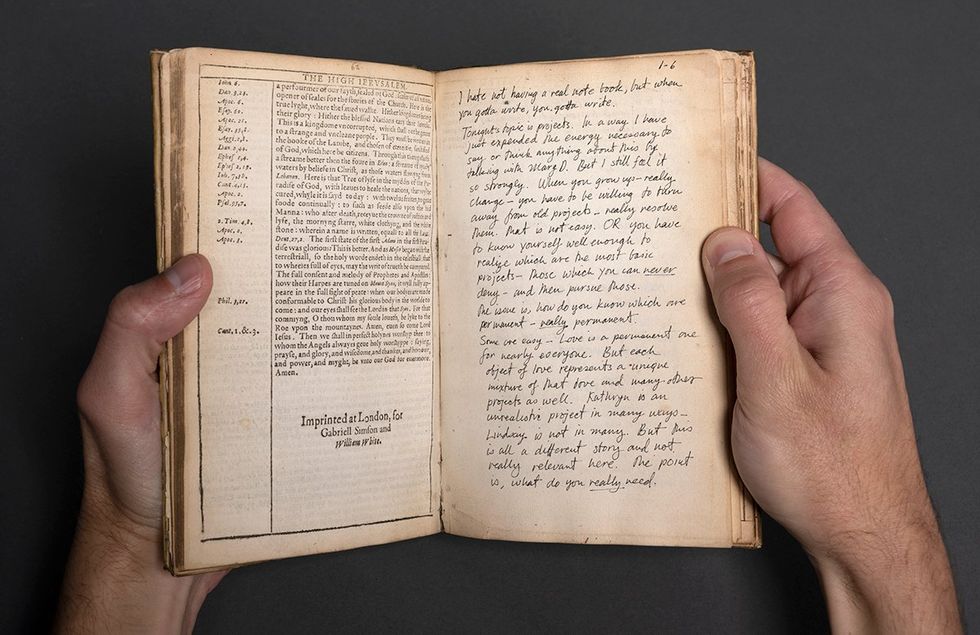
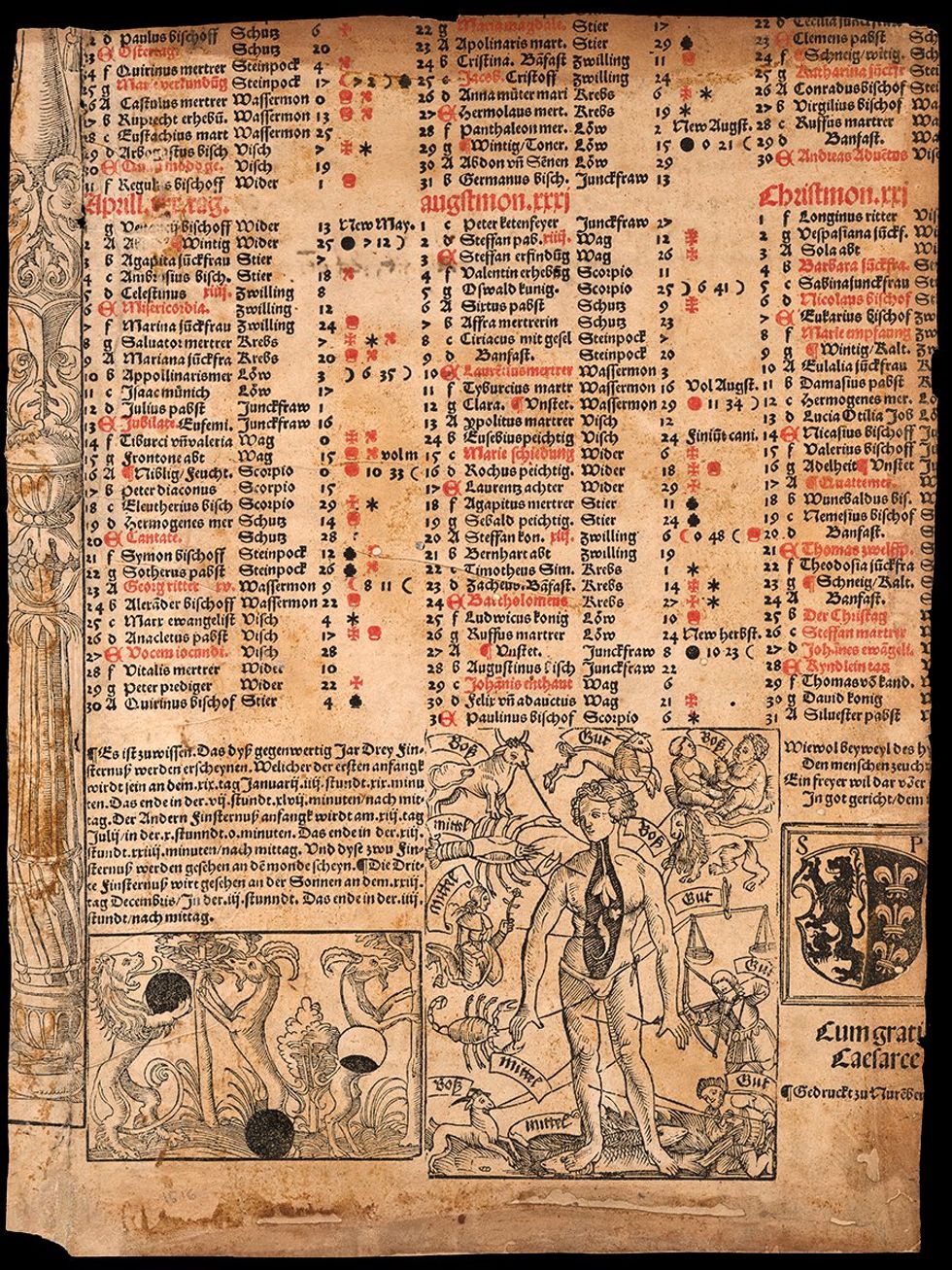
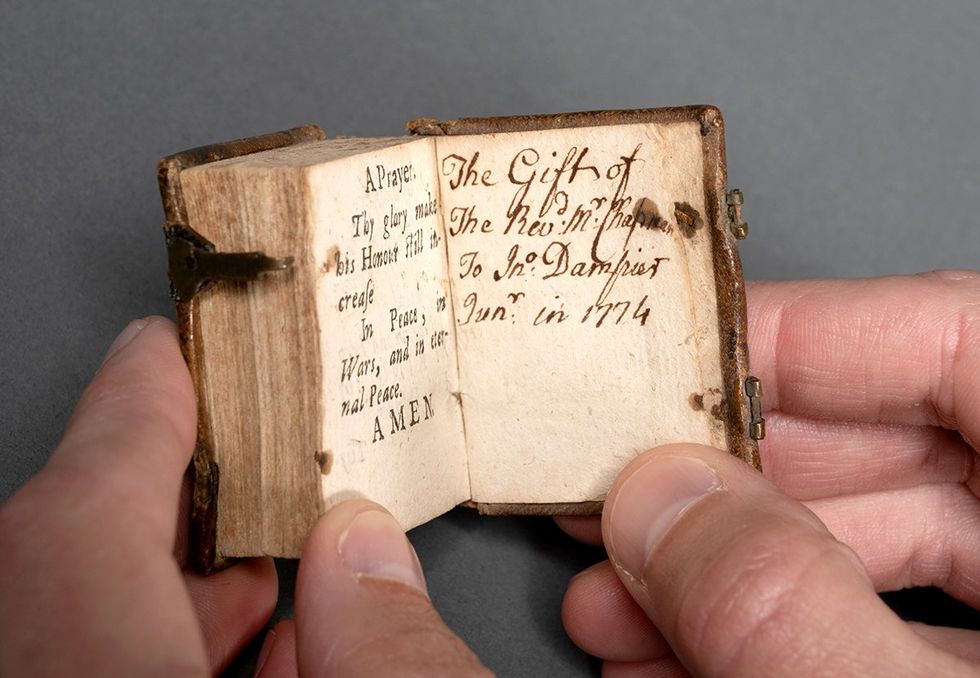
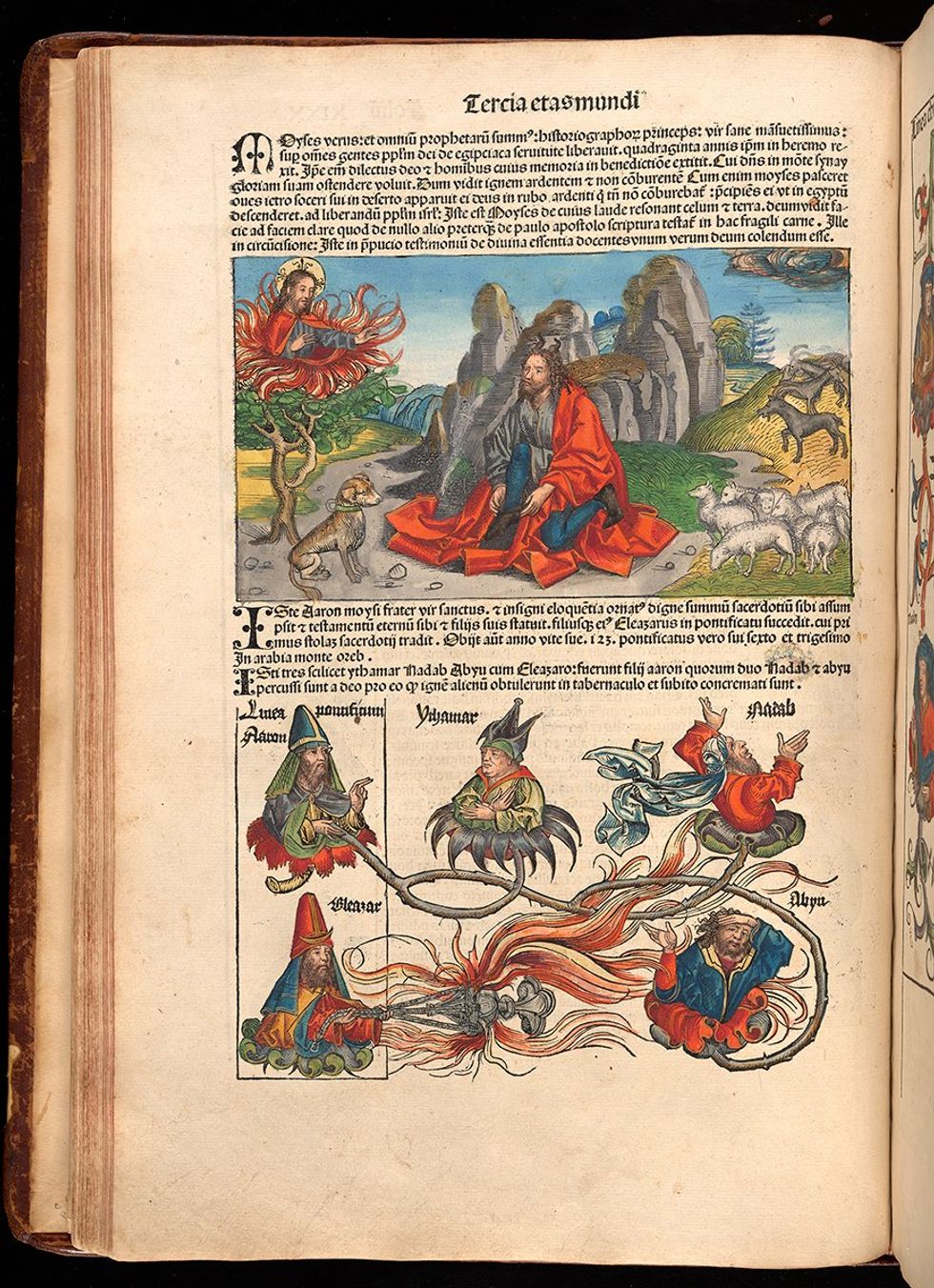
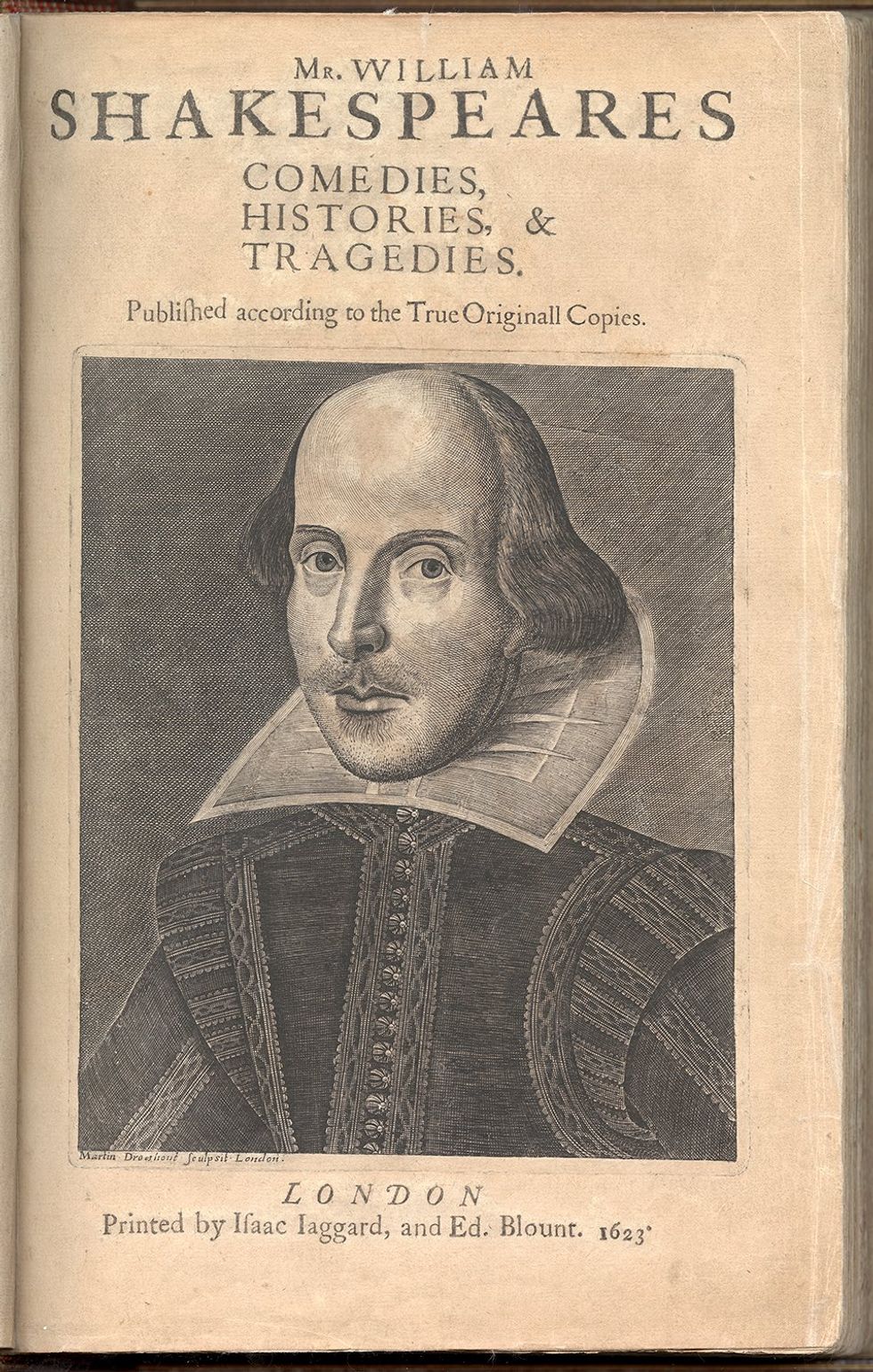
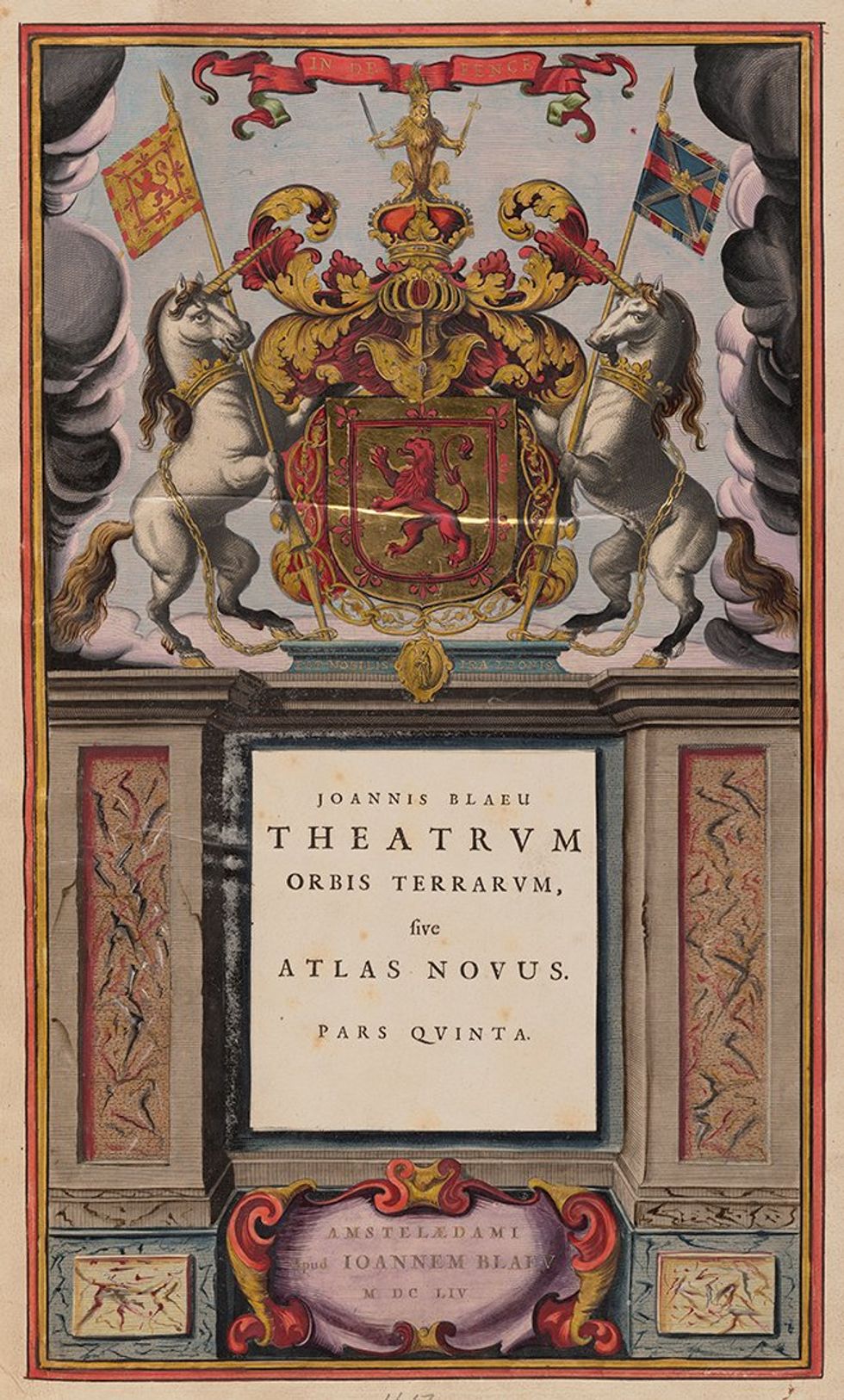


Pratt shares that he wants the exhibit to enlighten curious minds on how to glean as much information as possible from the books outside of the text within their pages. He describes it as "another set of literacies" to understand and interpret the aspects behind a century-old book's binding, paper, or repair techniques.
"It's one thing to come in and read the content and understand it in a historically-situated way, that's hard," he says. "If you're looking at a book, there's just so many different ways to approach it. So a lot of what I do [as a] bibliographer [is] study books as material artifacts to understand how they were made and how they have circulated, as one way to define it."
In an effort to not give too much away (and to encourage fellow bibliophiles to see the exhibit for themselves), here is a look at three books within three captivating collections found in The Long Lives of Very Old Books.
Survival
The first section of the exhibit, Survival, showcases books that have been preserved until today thanks to the work of people from earlier centuries who deemed them worth keeping, and the stories that can be told about the books that haven't had similar luck.
Several books in this section are the only existing copies known today, while others have much more available data regarding remaining copies. The Nuremberg Chronicle, for example, has over 1,200 traceable copies in similar libraries or private collections, despite an unknown total print run. Whereas an English translation of a poetry book by Pierre de Ronsard is the only surviving edition from before the 19th century.
The Nuremberg Chronicle was published in 1493, and features 1,800 illustrations that were printed using about 650 hand-carved wood blocks. Though it's not mentioned in the artifact label, Pratt shared a surprising detail about two specific wood block photos on the left page in The Nuremberg Chronicle that's on display.
"In this copy, these woodcuts should be switched in the order," he reveals. "Almost all other copies [are correct], but this copy is an example from before they fixed the error."
Variation
It's rare to find errors in modern books, but that was not the case in books published using older printing techniques, such as the Gutenberg printing press. Pratt explains that there's likely some typographical variation among every copy of every printed book from earlier centuries.
"Printers were very loathe to throw away sheets that had some errors in them," he says. "You and I can read through most errors, like a transposition of letters...Printers [back then] were like, 'They can figure it out,' or sometimes they would print an errata list on the back."
Another variation that can be found among the artifacts is the type of binding they are encased in. George Puttenham's The Arte of English Poesie attracts the most attention within the Variation collection. Pratt says the book was bound in a late 19th- to early 20th-century binding featuring striking gold and red accents on a black cover.
"This book was bound by a bindery that was started in New York City by a bunch of elite collectors there," Pratt says. "They were sick of sending their books to Europe to have them bound, so they brought some French people over who were good at binding and set up shop in [Manhattan]." (Update: Pratt reached out to amend his original statement.)
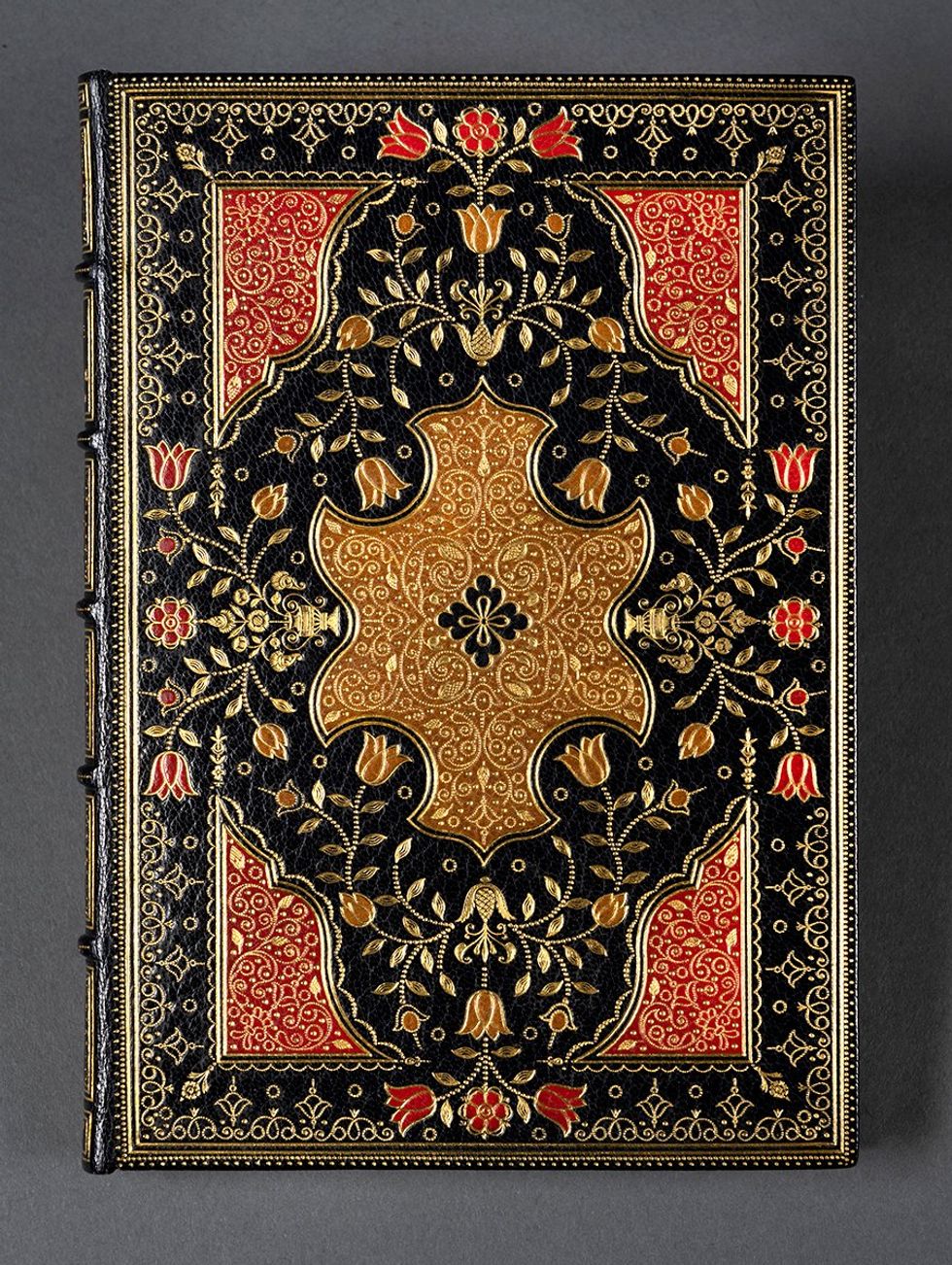
Repair
One of the most fascinating things learned throughout the exhibit is the differing level of care that each volume was given in its old life before being acquired by the Ransom Center. The Repair collection features two cases: one focusing on paper repairs, another highlighting binding repairs.
An early copy of first book printed in the English language, The Recuyell of the Historyes of Troye, is on display in the paper repair case. Delicately hand-sewn, zig zag stitches can be seen crossing from one edge of a torn leaf to another. Pratt estimates that this type of hand-sewn repair technique can date back to the 15th or even early 16th century. It also speaks to the things that bibliophiles will go through to fix a book themselves.
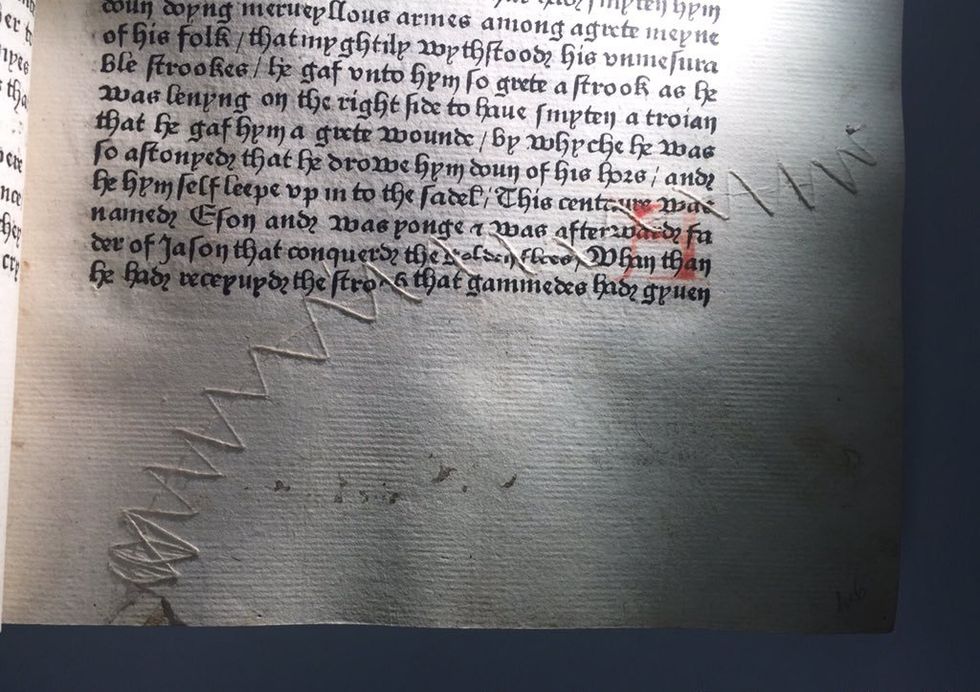
"This probably is an owner who doesn't want to go back to their binder, and just wants to fix it," he hypothesizes. "We've all fixed things at home that probably wasn't the best work, but we did it, and it's over with, and it's fine. And that's kind of what this is."
The Long Lives of Very Old Books will be on display August 19-December 30. Admission is free, and tours are available every Tuesday through Friday at noon, and on Saturdays and Sundays at 1 pm and 2 pm. More information about The Harry Ransom Center and the exhibit can be found on hrc.utexas.edu.
